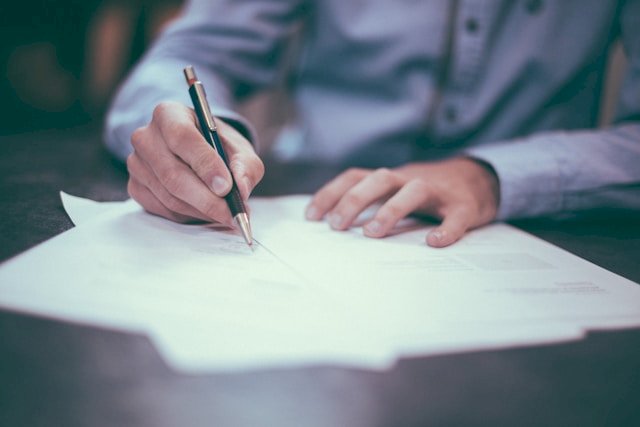What to Include in a Security Guard’s Daily Report
2 weeks ago - 3 min read
A security guard’s daily report is more than just paperwork—it’s a vital communication tool that upholds safety, accountability, and operational transparency at any facility. Whether you're securing a corporate office, shopping centre, hospital, or industrial site, knowing how to write an accurate and professional report is essential.
This guide covers everything a daily report should include—from routine patrol logs to incident responses—so you can document your shift effectively and maintain high reporting standards.
1. Where Do You Start When Writing a Security Report?
Begin with the foundational details. This ensures your report is easy to trace, verify, and review:
- Guard’s Name and Badge Number: Clearly identify yourself.
- Date and Time: Record the start and end of your shift.
- Location: Specify the exact site and any specific areas you monitored.
Example:
- Security Officer: John Smith, Badge #2523442342346
- Date: 05 April 2025
- Shift: 13:00 – 22:00
- Location: Bullring Shopping Centre, Birmingham
This opening sets the stage for a clear, complete report.
2. Why Are Routine Patrol Logs So Important?
Routine patrols demonstrate active monitoring and presence. Document them carefully:
- Routes Taken: Indicate areas covered and exact times of each patrol.
- Observations: Note anything out of the ordinary—e.g., unlocked doors, damaged equipment, or suspicious signs.
Example:
- 23:00 – Patrolled Car Park B. All entry points secure. No suspicious activity detected.
- Even if nothing occurs, these logs show diligence and help establish patterns over time.
3. How Should You Report Incidents?
When responding to incidents, accuracy and objectivity are crucial. Each incident entry should include:
- What Happened: State facts only—no speculation or assumptions.
- Time and Location: Be specific.
- People Involved: Include names, descriptions, or ID numbers.
- Actions Taken: Explain your response (e.g., alerting a supervisor, detaining the individual, calling police).
Example:
13:00 – Observed an individual attempting unauthorized access to a restricted area. Intervened and escorted the person to reception for verification.
Thorough incident reports can support internal investigations and even legal proceedings.
4. Should You Report Suspicious Activity That Doesn’t Lead to an Incident?
Absolutely. Suspicious or unusual behaviour—no matter how minor—should be logged to help pre-empt potential threats:
- Unfamiliar Persons: Describe physical appearance, clothing, and behaviour.
- Suspicious Vehicles: Include license plate, make, model, and colour.
Example:
14:00 – Noticed a white sedan idling near the loading dock for approximately 10 minutes. Informed site manager for follow-up.
These reports can be vital if patterns emerge later.
5. Why Should Maintenance Issues Be Included?
Security guards are often the first to spot faults that pose safety or security risks. These should always be documented:
- Equipment Failures: CCTV, locks, alarms, etc.
- Environmental Hazards: Water leaks, broken lights, obstructed exits, etc.
Example:
06:00 – Detected a faulty security camera in North Corridor. Reported issue to CCTV maintenance team.
Identifying these issues early helps prevent accidents and security breaches.
6. How Can Technology Improve Security Reporting?
Modern tools can make your job easier and your reports more robust:
- Mobile Reporting Apps: Use platforms like Guardso, Trackforce Valiant, or Silvertrac to document in real-time.
- Photo/Video Attachments: Capture visual evidence to support observations.
- Cloud-Based Systems: Secure storage and easy access for supervisors.
Digital reporting reduces errors, saves time, and enhances professionalism.
7. What Should You Include in Shift Handover Notes?
The incoming officer relies on accurate handover notes to maintain seamless security. Always include:
- Ongoing Issues: Any incidents still under investigation or awaiting resolution.
- Areas of Concern: Zones needing additional attention.
Example:
Monitor Loading Dock B for unauthorized vehicles. CCTV technician scheduled for camera repair at 05:00 tomorrow. </p?
Clear handover notes help maintain continuity between shifts.
8. Best Practices for Writing Security Reports
To keep your reports consistent, professional, and legally sound, follow these best practices:
- Be Concise and Factual: Avoid opinions or unnecessary details.
- Use Chronological Order: Log events as they happened.
- Use Formal Language: Avoid slang, abbreviations, or emotive words.
- File Reports Promptly: Submit at the end of your shift for maximum accuracy.
Can daily reports be used in legal cases?
Yes. A properly written, factual report may be used as legal evidence, so accuracy is vital.
What if nothing happened during the shift?
Still record your patrols, observations, and checks. This demonstrates presence and due diligence.
Are digital tools mandatory?
Not required, but strongly recommended for improved efficiency, accuracy, and data security.
Final Thoughts: Elevate Your Security Reporting
A security guard’s daily report is more than a log—it’s a reflection of your professionalism, vigilance, and communication skills. When written properly, it protects not only the site but also your own performance record.
By including detailed patrol entries, comprehensive incident logs, maintenance notes, and well-prepared handover summaries, your reports will stand out as professional, credible, and legally sound.